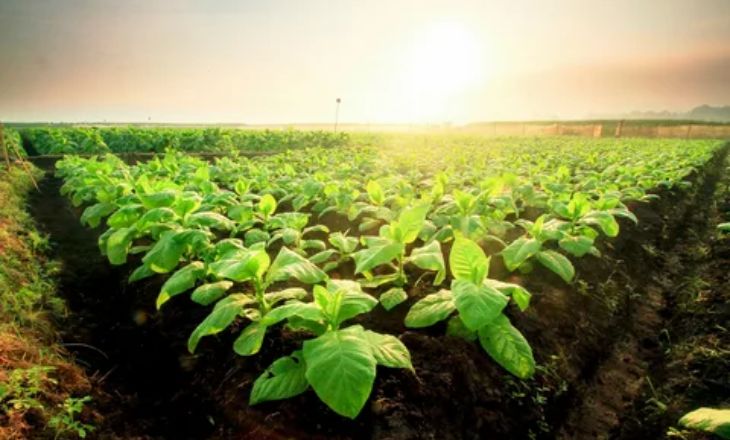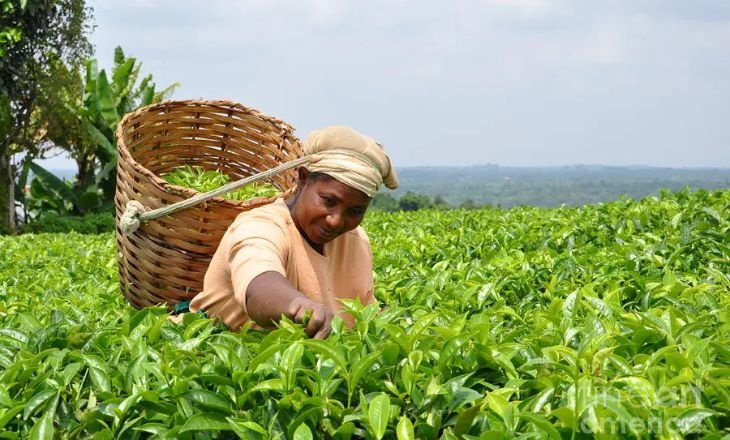Farmers plant Cash Crops in America’s vast agricultural fields every year. These crops are essential for economies, food, and hard work.
This article explores food crops that feed us and impact economies and societies. Let’s journey through corn, soybeans, and wheat fields to learn about the importance of cash crops.
What Are Cash Crops
Cotton, tobacco, coffee, and sugarcane are grown to make money. They create jobs and boost local economies. Relying only on cash crops can be risky due to price changes and environmental issues.
Farmers should grow different crops to reduce risks. Crops are important for global trade and economic growth. Successful cash crop farmers make money and contribute to food security and sustainability.
Food Crops
Food crops are important for agriculture and provide nutrients for many people. Different crops like potatoes and wheat help feed the growing population.
Climate change threatens food security, so farmers are growing more resilient crop varieties. Vertical farming is a new way to grow crops in stacked layers, saving space and reducing water use.
Scientists use biotechnology to create genetically modified crops that resist pests and diseases. By adapting to environmental changes, food crops will continue to be essential for global food security in the future.
What Is The Difference Between Cash Crops And Food Crops
Cash crops and food crops are different in agriculture. Cash crops like cotton and coffee are grown to sell for profit, while food crops are grown for people or animals to eat.
Cash crops make money for farmers, while food crops provide food and nutrition. Cash crops need much work to grow well, while food crops focus on nutrition and sustainability.
Knowing this difference is important when planning agriculture and resources to make money and provide food for communities.
Top Crops
Rice is the top crop grown worldwide and is a staple food for many people. It can grow in different climates and is important for global agriculture. Soybeans are also widely grown and have many uses, such as animal feed, tofu, and oil.
Coffee Crop
Coffee beans go through different stages before reaching your cup. Farmers work hard to grow and process their crops correctly to ensure good taste. They must adjust to weather changes and protect the environment for sustainable coffee production.
The increasing demand for coffee has led to discussions about fair trade and ethical sourcing. Consumers are interested in their coffee’s origins and production methods, prompting companies to prioritize sustainability.
Tea Crop
Tea has a long history and is important in many cultures. Because of their land and processing methods, India and China have different tea flavors. Due to increasing demand, farmers are finding sustainable ways to grow tea.
The climate, including altitude and rainfall, influences the taste of tea. People are beginning to favour teas from certain regions for their special qualities.
Cocoa Crop
Cocoa is a tasty crop used to make chocolate and is vital in many regions globally, like West Africa and South America. Sustainable and ethical practices are key for the future of cocoa farming. Supporting initiatives that protect biodiversity and fair labour can help cocoa farming and the environment.
Crop Of Cotton
People have valued cotton for a long time. It has been grown for centuries and remains important today. Growing cotton requires careful attention to detail, such as selecting the right seeds and caring for the soil and water.
Cotton farming can harm the environment due to its high water and pesticide needs. Farmers are adopting sustainable practices, like organic methods and new technologies, to conserve water and minimize chemical use.

United States Crop Production
Crop production is important in the United States because it helps the economy and food supply. The U.S. is a top producer of crops like corn, soybeans, wheat, and cotton, using advanced technology and lots of land.
Different regions grow different crops depending on the weather and soil. Farmers are now focusing on sustainable farming, using conservation tillage and cover cropping to protect the environment and improve productivity. This helps agriculture adapt to climate change.
More people want organic food, so there is a growing market for organic fruits and vegetables. Farmers are switching to organic methods to meet this demand, changing how crops are grown in the country.
Where Is Most Of The Corn Production In The United States Concentrated?
Most corn in the U.S. is grown in the Midwest, called the Corn Belt. States like Iowa, Illinois, Nebraska, and Minnesota are top corn producers because of their fertile soil and favorable weather. They have ample land for growing corn and use modern farming techniques to produce it.
They also have efficient ways to transport and process the corn, which contributes significantly to U.S. corn production and impacts local economies and the global market.
US Corn Production Map
The US Corn Production Map shows where corn is grown in the country, with states like Iowa, Illinois, and Nebraska being major producers. The map displays the large areas used for growing corn and how it’s distributed across different climates. By studying the map, we can see patterns that affect crop yields.
Areas with abundant water grow more corn, while those with water shortages struggle to produce as much. Recognizing these differences is crucial for policymakers and farmers to develop sustainable strategies for improving crop yields and food security in evolving environments.
Which Crop Is Most Profitable
Almonds are a valuable crop in the US because they are in high demand and are increasing in price. People like almonds for their health benefits and versatility. Cannabis is another profitable crop in the US, especially now that some states have legalized it for recreational use.
The cannabis market is expanding, creating money-making opportunities for both large and small farmers.
Seasonal Crops
Seasonal crops are crucial for farming in the US. Each region grows different crops based on the weather. The changing seasons impact what can be grown and the taste of the food. Farmers adapt their planting to the weather for a successful harvest, demonstrating the harmony between humans and nature in farming.
Crops To Grow In Summer
Plant tomatoes, cucumbers, and peppers in summer because they thrive in hot weather and provide fresh produce. Grow herbs like basil, mint, and cilantro to flavor your food and attract helpful insects. If you have limited space, grow them in containers on a sunny patio.
Try planting drought-resistant crops like okra, eggplant, and sweet potatoes for a sustainable summer garden. These vegetables need less water and can handle high temperatures, helping you save water and get a good harvest.
Winter Crops
Winter is a good time for farming. Tough crops like kale and Brussels sprouts and grains like wheat and barley can be grown. Cover crops like winter rye protect the soil and prevent erosion in cold weather. Farmers are experimenting with new crops that can withstand the cold.
Herbs like thyme and rosemary can grow in winter and enhance the taste of dishes. These new techniques allow farmers more crop options and produce food yearly.
Autumn Crops
Crops such as pumpkins, apples, and winter squash thrive in cooler weather and can be sold for a good price. Cover crops like rye and clover improve soil quality and prevent erosion during winter.
Planting a mix of crops can boost yields and reduce risks. Experiment with different crop varieties that suit your region for a successful autumn harvest.
Crops To Grow In Spring
In spring, you can harvest fast-growing vegetables like radishes, lettuce, and peas early. These veggies grow quickly and add color to your garden. Strawberries are a good option for spring and can thrive in raised beds or containers.
Herbs like basil and cilantro can enhance the flavor of your food and attract beneficial insects. Spring is a great time to experiment with growing heirloom tomatoes and colorful carrots.
What Are The Top Crops Grown In The United States
Cash crops, like corn and soybeans, are important in the United States. Corn is a top crop for food, animal feed, and industry. It is grown on large areas of land in the Midwest. Soybeans are also a major crop used in food, animal feed, and biofuel.
The United States is a top producer of soybeans due to its good climate and advanced farming methods.
Barley And Oats
Barley and oats are common grains in the American diet. Barley has a chewy texture and nutty flavor, and can be used in various dishes. Oats are good for the heart, as they have fiber that can lower cholesterol.
Barley grows well in the Midwest and Pacific Northwest, while oats thrive in cooler states like North Dakota and Minnesota. Both grains showcase the agricultural diversity of America’s heartland.
Conclusion
Cash crops are important for the United States economy. They help farmers make money and support industries that need them. Each cash crop, like corn and soybeans, has its own effect on the market. It’s important to help cash crops grow in different parts of the country.
Let’s work together to ensure these crops do well in the United States.

Frequently Asked Question
What Is The Largest Cash Crop In America In The World?
Corn is the largest cash crop in America.
What Is The Farm Economy In 2024?
The value of farm assets is expected to increase by 4.7 percent in 2024, reaching $4.28 trillion. This increase is mainly due to the rising value of farm real estate. Farm debt is also expected to increase by 5.2 percent in 2024, reaching $547.6 billion.

